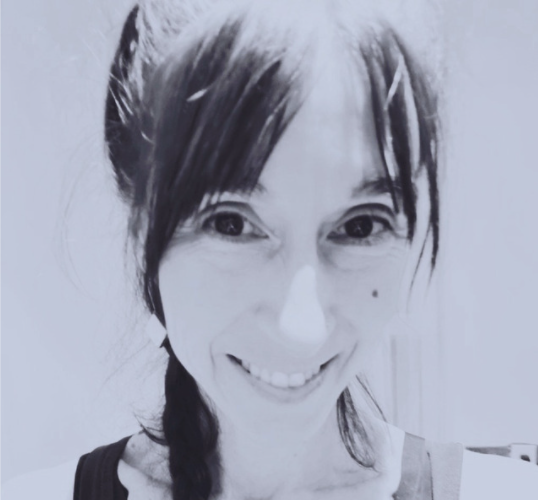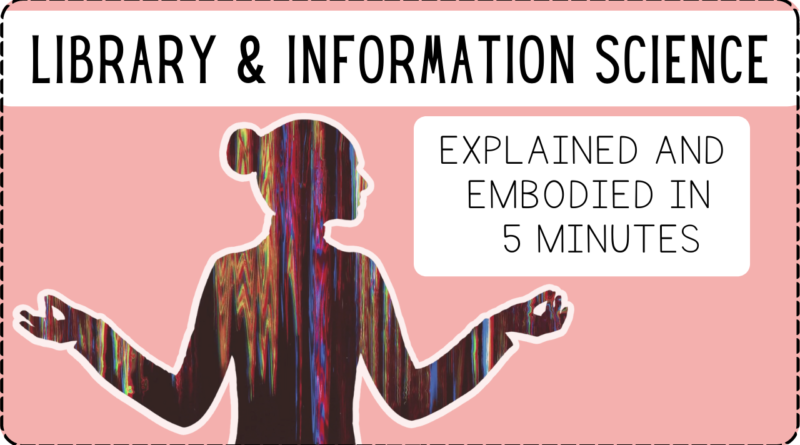“Library and Information Science” Explained and Embodied in 5 Minutes
“Library and Information Science”
Explained and Embodied in 5 Minutes
Jenna Hartel
This new video is my best multimedia effort to answer the question “What is Library and Information Science?” in 5 minutes. It is perfect for incoming students of LIS and could enliven your first class this September. In a nutshell, LIS is cast as the mediating force between publications and people. Further, the video distinguishes the academic discipline (library and information science) from the related concepts of its institution (the library) and profession (librarianship). Along the way, several key concepts are defined, such as the reference interview, reader’s advisory, bibliographic control, and information retrieval. As well, the three distinct types of libraries are named, that is, public, academic, and special libraries.
—Over my teaching career, I have come to appreciate embodied learning strategies, and I often have my students move physically in ways that capture ideas. —
Over my teaching career, I have come to appreciate embodied learning strategies, and I often have my students move physically in ways that capture ideas. Along these lines, the conclusion of this video invites viewers to position their bodies as a bridge between publications and people, which may help to digest and imprint the definition. (The same physical formation mirrors many dancing librarians that appear throughout the video, as shown below.)
Beyond the classroom, I believe the video may also prove useful for students in our programs to share with their family and friends who have difficulty understanding the nature of the field, and who reduce LIS to checking out books or “shushing” loud patrons (!). What is more, marketing and admissions arms at iSchools could point curious applicants to this video, or show it at a recruiting event.
Of course, what’s presented here is my opinion only, and other multimedia perspectives on LIS are available. This one is from Stacks and Facts (a YouTube channel about LIS by a student of the field) is excellent, and has a whopping 110,000+ views over five years. Another, “should you study information science?? (what is it?)” from University of Michigan student, Ewina Papinez, is accessible and personal. Beyond YouTube, there are scholars, such as Dr. David Lankes, who cast the institution, profession, and discipline differently. Specifically, Professor Lankes sees the Library as a place to enable community conversations moreso than a portal to publications. For sure, I appreciate and admire Dr. Lankes’ vision. There are also visionaries who champion the activist and social justice imperatives of Library and Information Science, namely Drs. Bharat Mehra, Nicole A. Cooke, and Keren Dali. I encourage viewers of my video to consider these contrasting perspectives, among others, on Library and Information Science.
Upon completing most of the videos on my channel, I have a sense of mastery, that is, the outcome feels right and complete, to me. This video, differently, has not left me satisfied. Library and Information Science has too many tensions: between print and digital materials, history and future, Library versus Information sides of the field, and other bifurcations or tensions. It ultimately felt impossible to visually represent and balance the dimensions in a 5-minute timespan. Faced with these conceptual and design challenges, the video at hand was put aside for weeks, hoping for a clarity and resolution, that was never achieved. It seemed possible that I might never complete and publish a perfectly satisfying What Is Library and Information Science? video! It was only a sense of wanting to move onto the next project, that helped me press the “PUBLISH” button, despite a feeling of lingering shortcomings, both aesthetic and conceptual. Nevertheless, I hope you enjoy and share this video with students, family, and friends, while developing and expressing your own original conception of LIS, too.
Cite this article in APA as: Hartel, J. “Library and information science” Explained and embodied in 5 minutes. (2023, August 14). Information Matters, Vol. 3, Issue 8. https://informationmatters.org/2023/08/library-and-information-science-explained-and-embodied-in-5-minutes/
Author
-

I am an Associate Professor at the Faculty of Information, University of Toronto. As an interdisciplinary social scientist devoted to the field of Library and Information Science (LIS), I conduct research in three related areas: 1) information and the "higher things in life" that are pleasurable and profound; 2) visual and creative research methods; and 3) the history and theory of LIS. In the Master of Information program at the Faculty of Information, I mostly teach graduate students in the Library and Information Science concentration. Both my research and teaching aim to be an imaginative forms of intervention in the field of LIS, through unorthodox projects such as Metatheoretical Snowman, Welcome to Library and Information Science, and the iSquare Research Program. See my website at jennahartel.info or my YouTube Channel, INFideos.
View all posts







